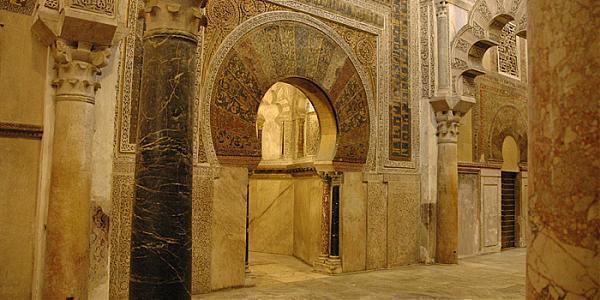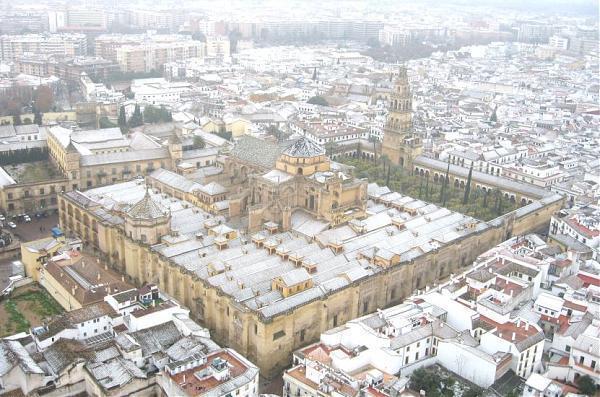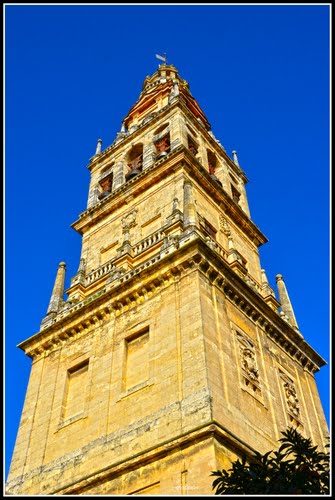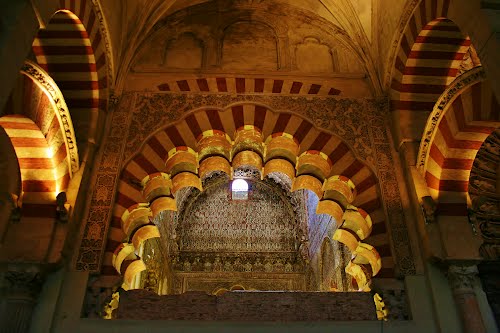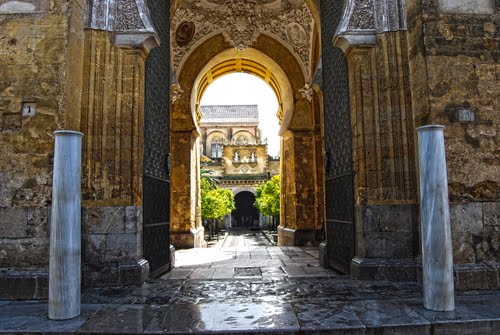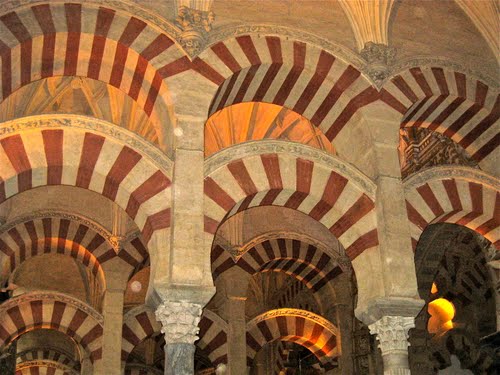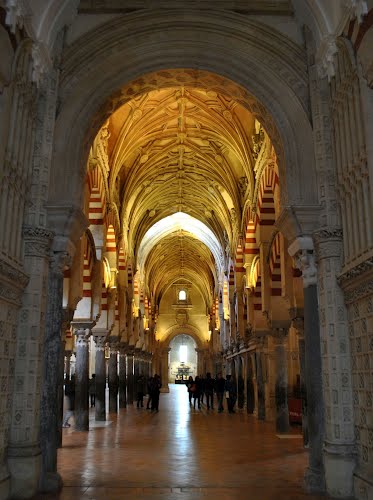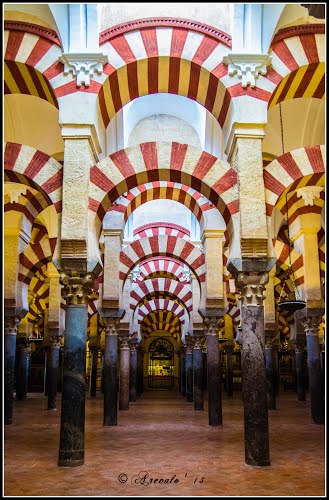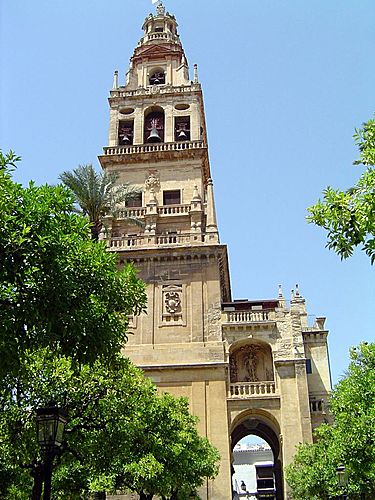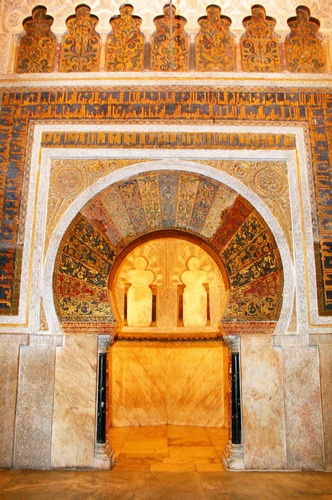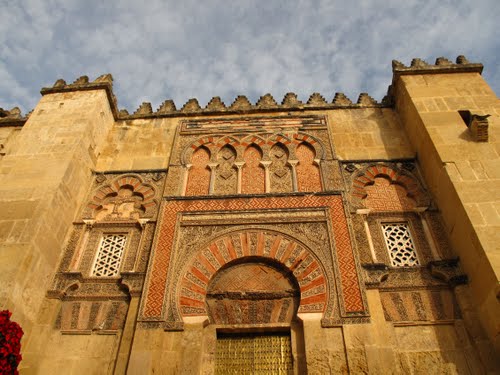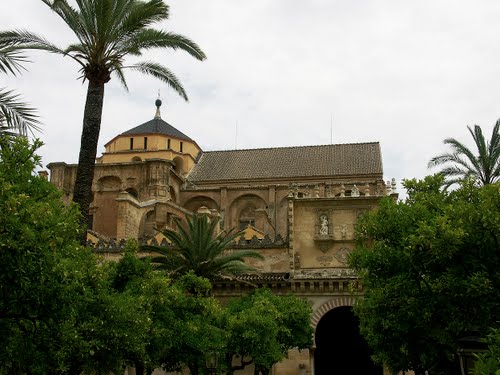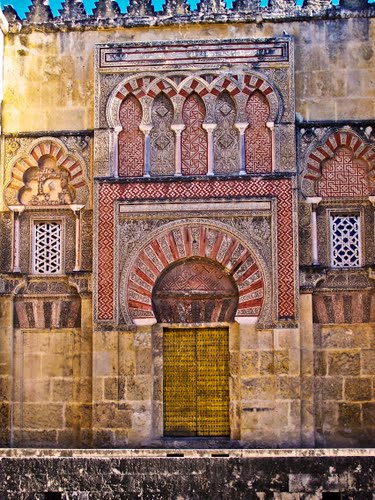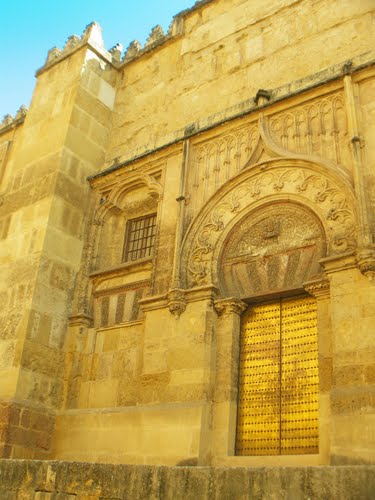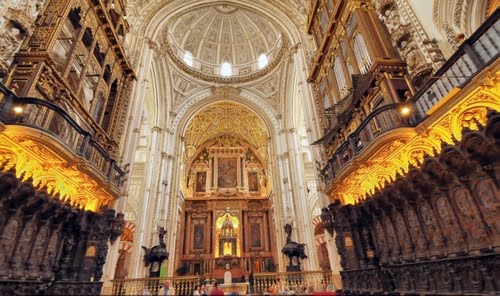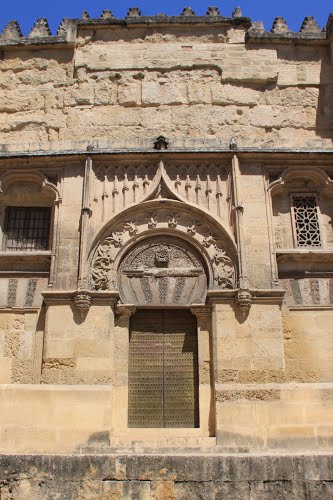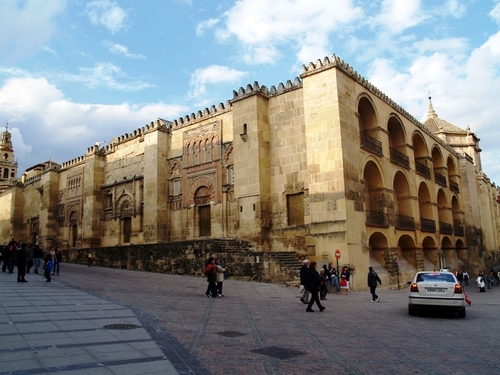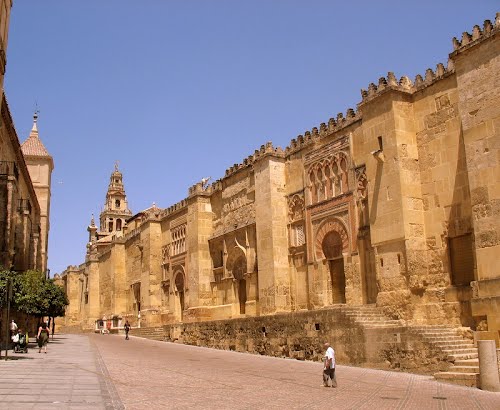The Mosque – Cathedral of Cordoba, also known as the Great Mosque of Cordoba, whose ecclesiastical name is the Cathedral of Our Lady of the Assumption, is the Catholic cathedral of the Diocese of Cordoba dedicated to the Assumption of the Virgin Mary and located in the Spanish region of Andalusia. The structure is regarded as one of the most accomplished monuments of Moorish architecture.
The site was originally a small temple of Christian Visigoth origin, the Catholic Basilica of Saint Vincent of Lerins. When Muslims conquered Spain in 711, the church was first divided into Muslim and Christian halves. This sharing arrangement of the site lasted until 784, when the Christian half was purchased by the Emir 'Abd al-Rahman I, who then proceeded to demolish the original structure and build the grand mosque of Cordoba on its ground. Cordoba returned to Christian rule in 1236 during the Reconquista, and the building was converted to a Roman Catholic church, culminating in the insertion of a Renaissance cathedral nave in the 16th century.
Since the early 2000s, Spanish Muslims have lobbied the Roman Catholic Church to allow them to pray in the cathedral. This Muslim campaign has been rejected on multiple occasions, both by the church authorities in Spain and by the Vatican.
Origins
The cathedral was originally a Catholic church dedicated to Saint Vincent the third, although according to Susana Calvo Capilla, a specialist on the history of the Mosque–Cathedral, no clear archaeological evidence has been found of where this earlier church was on the site. After the Islamic conquest of the Visigothic kingdom, the building was divided between the Muslims and Christians. When the exiled Umayyad prince Abd al-Rahman I escaped to Iberia and defeated the governor of Al-Andalus, Yusuf al-Fihri, he found the Cordovese divided into various sects, including the Gnostics, Priscillianists, Donatists, and Luciferians. His ambition was to erect a temple which would rival in magnificence those of Baghdad, Jerusalem, and Damascus, and approach in sanctity the fame of Mecca. Above a Christian church dedicated do Saint Vincent, Abd al-Rahman decided to raise his great mosque. He offered to buy the church and the plot. The negotiations for the sale were placed in the hands of the Sultan's favourite secretary, Umeya ibn Yezid. Under the terms of the transfer, the Cordovese were permitted to reconstruct the church formerly dedicated to Ss Faustus, Januarius, and Marcellus, three Christian martyrs whom they deeply revered.
Abd al-Rahman allowed the Christians to rebuild their ruined churches and purchased the Christian half of the church of St Vincent, as agreed upon in the sale terms. The Emirate was rich. Apart from the treasure wrested from the Goths during the recent wars, he also extracted a tithe upon the produce of the land and on manufactures. Every able Muslims in Andalusia were asked to provide to pay the Zakat. A mandatory tax known as Jizya was also laid upon only one able Christian and Jew per household in Andalusia as a precondition for services & protection provided by the government of Andalusia, unless they participated in the protection services themselves. The Jizya was lesser than the Zakat, and both were one of the main sources of income for the Muslim rulers in lands occupied by Islamic tribes but populated still by Christians, to provide all needed services for all people living in the land, especially the poor. Beyond this, the Moorish kings were greatly enriched by the acquisition of the valuable mines of Iberia, the quarries of marble, and other sources of wealth. From these revenues Abd al-Rahman and his successors, Hisham, Abd-al Rahman II, the greatest of the dynasty and the third of the line, and lastly the extravagant Almanzor, lavished large sums upon the designing, construction, and costly adornment of the Mosque. Abd al-Rahman I and his descendants reworked the building over the following two centuries to fashion it as a mosque, starting in 784. Additionally, Abd al-Rahman I used the mosque as an adjunct to his palace and named it in honour of his wife. Traditionally, the mihrab of a mosque faces in the direction of Mecca, by facing the mihrab, worshipers pray towards Mecca. Mecca is east-southeast of the mosque, but the mihrab of this mosque unusually points south.
The work of building the resplendent Mezquita employed thousands of artisans and labourers, and such a vast undertaking led to the development of all the resources of the district. Hard stone and beautifully veined marbles were quarried from the Sierra Morena and the surrounding regions of the city. Metals of various kinds were dug from the soil, and factories sprang up in Cordoba amid the stir and bustle of an awakened industrial energy. A famous Syrian architect made the plans for the Mosque. Leaving his own house on the edge of Cordoba, the Emir came to reside in the city, so that he might personally superintend the operations and offer proposals for the improvement of the designs. Abd al-Rahman moved about among the workers, directing them for several hours of every day.
The mosque underwent numerous subsequent changes: Abd al-Rahman II ordered a new minaret, while in 961 Al-Hakam II enlarged the building and enriched the Mihrab. The last of such reforms was carried out by Almanzor in 987. It was connected to the Caliph's palace by a raised walk-way, mosques within the palaces being the tradition for previous Islamic rulers – as well as Christian Kings who built their palaces adjacent to churches. The Mezquita reached its current dimensions in 987 with the completion of the outer naves and courtyard.

